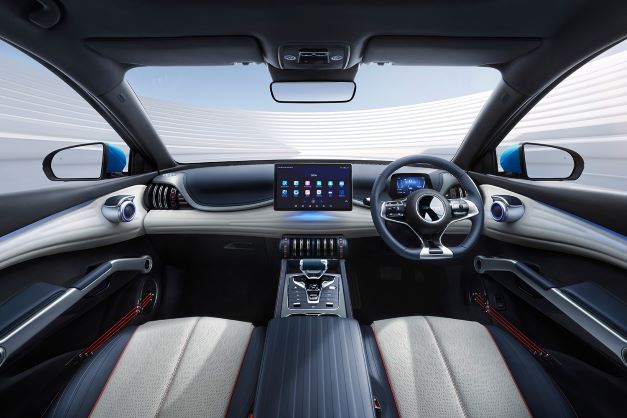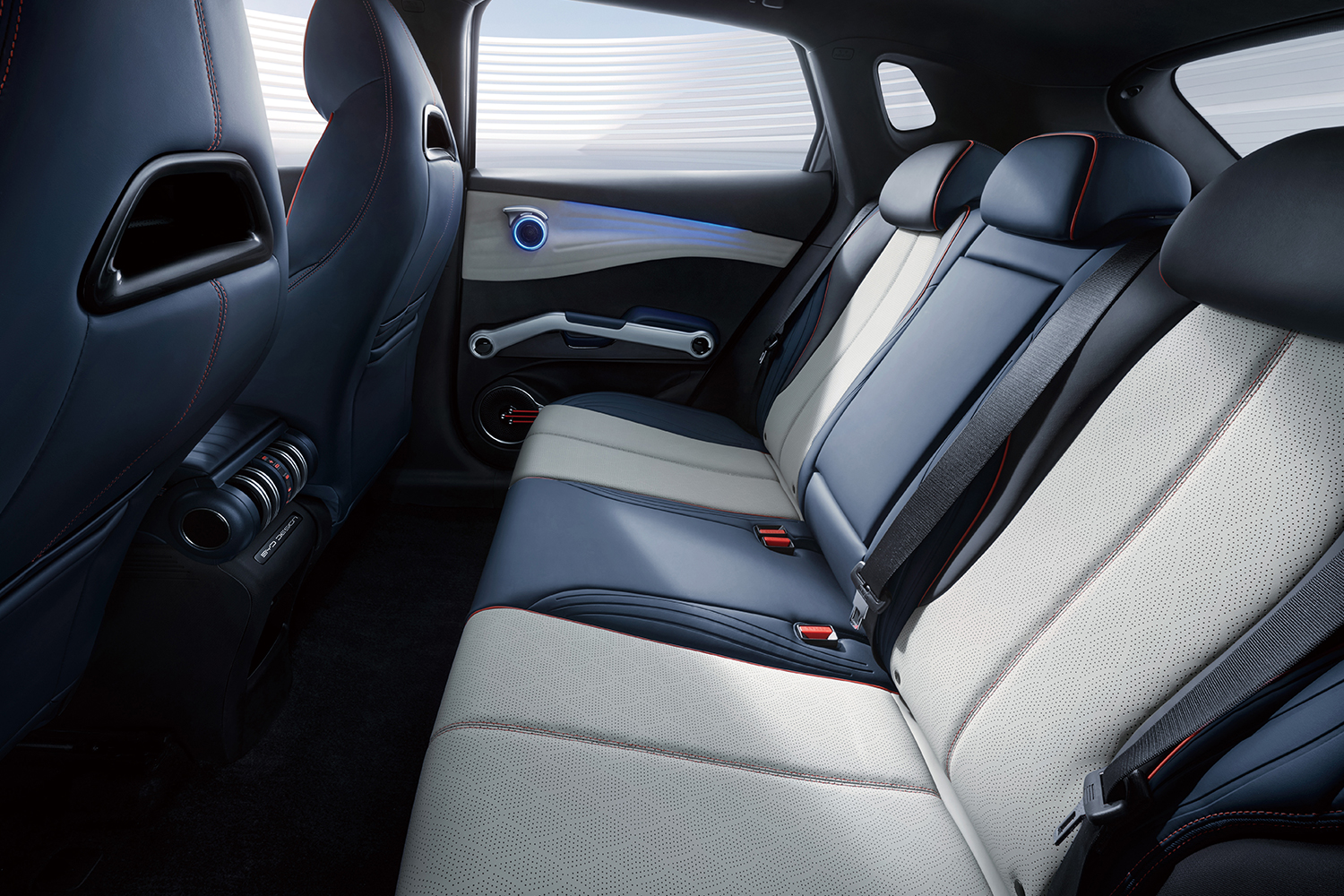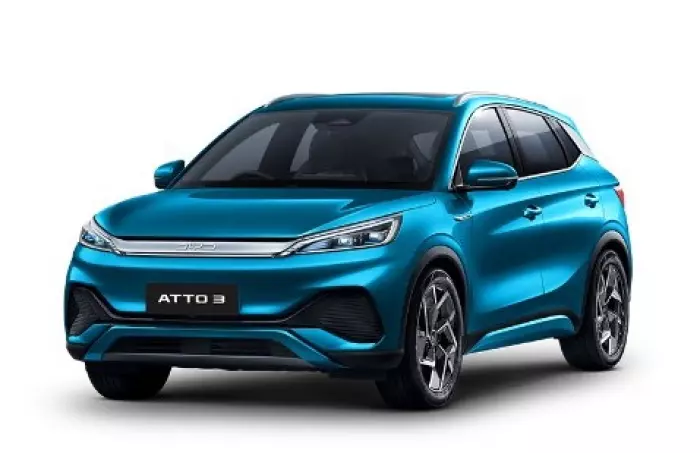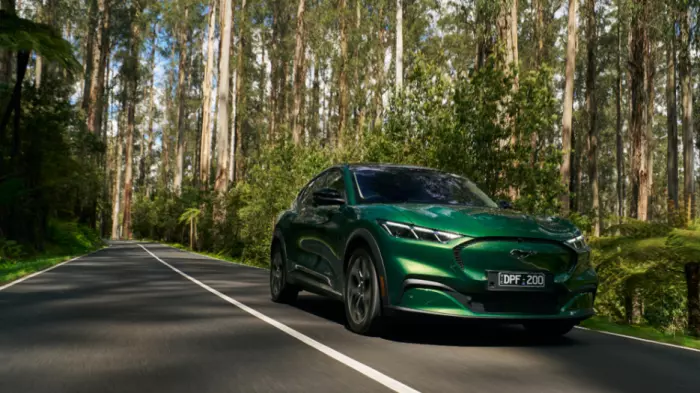In its first full month in New Zealand, Chinese carmaker Build Your Dreams has sold enough vehicles to beat the combined sales of Mercedes-Benz, Land Rover, Audi, Lexus and Volvo.
Last month, BYD sold 448 cars – $25m in sales. That makes it bigger than individual sales for Ford, VW, Nissan, Honda or MG, and within cooee of Mazda and Hyundai.
You are now required to totally expunge from your grey matter any thinking that Chinese cars are substandard. The Atto 3 is a well-built EV with a 400km range that retails for about $44,000 (plus on-road costs) after the government's clean-car rebate.
It is a gamechanger, with an innovative battery system from an absolutely huge Chinese firm. And it is cheaper than many comparably specced petrol vehicles.
There is a lot to love about this car. In many ways, it heralds the arrival of Chinese EVs as a force in the NZ market.
But first, who the hell is Build Your Dreams? It's the third-largest carmaker globally by value and has an astounding 30% of the Chinese car market. It sees itself as a battery company first and a carmaker next.
BYD made 1.1m vehicles last year and is on track to make 2m this year. It is bigger than Volkswagen, to give you a comparison.

In NZ, the master distributor is Ateco, which also brings in Maserati, Alfa Romeo, Fiat and Jeep. BYD is set to become Ateco’s biggest-selling brand and the staff there are clearly excited about it.
BYD is a vertically integrated manufacturer, which means it doesn’t have the same manufacturing issues as other car firms. It even makes its own semiconductors.
Where it will experience delays is with shipping – getting enough cars onto vessels to sell here. It is said to be looking at making its own vehicle ships next.
Innovative battery
The Atto 3 features the blade battery system, which is safer than other batteries. The chemical composition is lithium iron phosphate (LFP) rather than the nickel manganese cobalt (NMC) used elsewhere. This not only makes it safer but also means the batteries are smaller for comparable power.
Although the Atto 3 will do 0-100km/h in 7.3 seconds, next year BYD says it will have another vehicle on sale here capable of doing that in less than four seconds.
I really like how BYD is not trying to be European. We lionise French, German and Italian car marques and look down on China’s offerings. That will be the reason SAIC (formerly the Shanghai Automotive Industry Corporation) bought the MG brand and partly why Geely is using its subsidiary Volvo to push Polestar.
But BYD is unashamedly Chinese, and it is about time. It takes styling cues from dragons (including dragon-scale panels behind the rear door), and inside it is influenced (inexplicably) by gyms. It is as though someone misunderstood the instruction to “make it sporty”.
 The gear stick will raise a few eyebrows. (Image: Supplied)
The gear stick will raise a few eyebrows. (Image: Supplied)The interior is just quirky enough to be different. The handles have little speakers in them, the gear shift looks like a fighter jet, and the doors feature cords to hold things in the pockets that can be played like a guitar and even tuned.
In a potentially divisive move, the dashboard features a long white sinewy muscle that is soft to the touch and reminded one reviewer of human skin.
The 12.8-inch central tablet is set up horizontally but will spin around to vertical at the touch of a button. Unlike a basic Tesla with its single screen and no heads-up display, with the Atto 3, a small screen behind the steering wheel displays speed and a few other bits of info. Unfortunately, much of the type is so small as to be unreadable.
 The dashboard is soft to the touch. (Image: Supplied)
The dashboard is soft to the touch. (Image: Supplied)The Atto 3 comes with a six-year/150,000km warranty and eight years/160,000km for the battery.
Each car comes with free over-the-air updates for life, and an additional two gigabytes a month for personal use such as streaming music
The Atto 3 defaults to an economy mode (there’s also standard and sport) and this seems to be fine. Even on a trip from Auckland into Northland, on a route full of hills and winding corners, there’s plenty of charge. I stop to do a bit of grocery shopping in Orewa and top it up at the ChargeNet station. But there's no real need – I am just being cautious.
Safety features
As for drive quality, it does what it says on the box. I didn’t encounter any issues, and it performs as a nice mid-range small SUV. It is packed with safety features, including a 360-degree camera, adaptive cruise control and a driver-assist steering system that I hated enough to try twice and then permanently turn off. Unlike top-level systems like those in a Mercedes, removing your hand for even a few seconds causes a sharp-sounding alarm, and the only way to get it to stop is to make a hard turn to let it know who is boss.
There are a few things missing, such as Apple or Android Play, but these will arrive as a free over-the-air update later in the year, as will a local version of the app that turns your phone into a key.
There will also be an adaptor so the car can fuel any standard 240v device, such as a TV or fridge if you go camping. During the Atto 3 launch event, staff were using it to make smoothies with a Thermomix.

The interior (above) is well finished, well configured and roomy. I like it better than the inside of the Tesla Model Y.
The Atto 3 represents incredible value for money. It shouldn’t be seen as being in the same category as other cheap EVs such as the MG ZS EV or even the woeful Mini Electric.
At the lower-priced end of the market, things are changing rapidly. MG is about to reveal its new EV (at a cocktail party, no less) and the Ora Good Cat is already making the rounds of motoring journalists ahead of its formal launch here.
The pressure will then go on the likes of the Nissan Leaf, Hyundai Ioniq and the Mini Electric to either improve rapidly or just disappear. Why would you buy one of those if there’s a comparable car for $20k-$30k cheaper?
| Battery size | Stated range | Price |
Atto 3 (battery 1) | 50kWh | 345km | $52,995 |
Atto 3 (battery 2) | 60kWh | 420km | $57,990 |
Mini Electric | 32.6kWh | 217km | $59,990 |
Nissan Leaf | 40kWh | 270km | $61,990 |
Hyundai Ioniq | 38.3kWh | 311km | $65,990 |
Hyundai Ioniq Elite | 38.3kWh | 311km | $71,990 |
All of these cars are eligible for an $8625 government rebate.
As the chart shows, the entry-level Atto 3 is $19,000 cheaper than the Hyundai Inoniq Elite with similar performance. Ouch.
This might just be the Toyota of the current generation of cars. A cheap, well-made EV for everyone.














